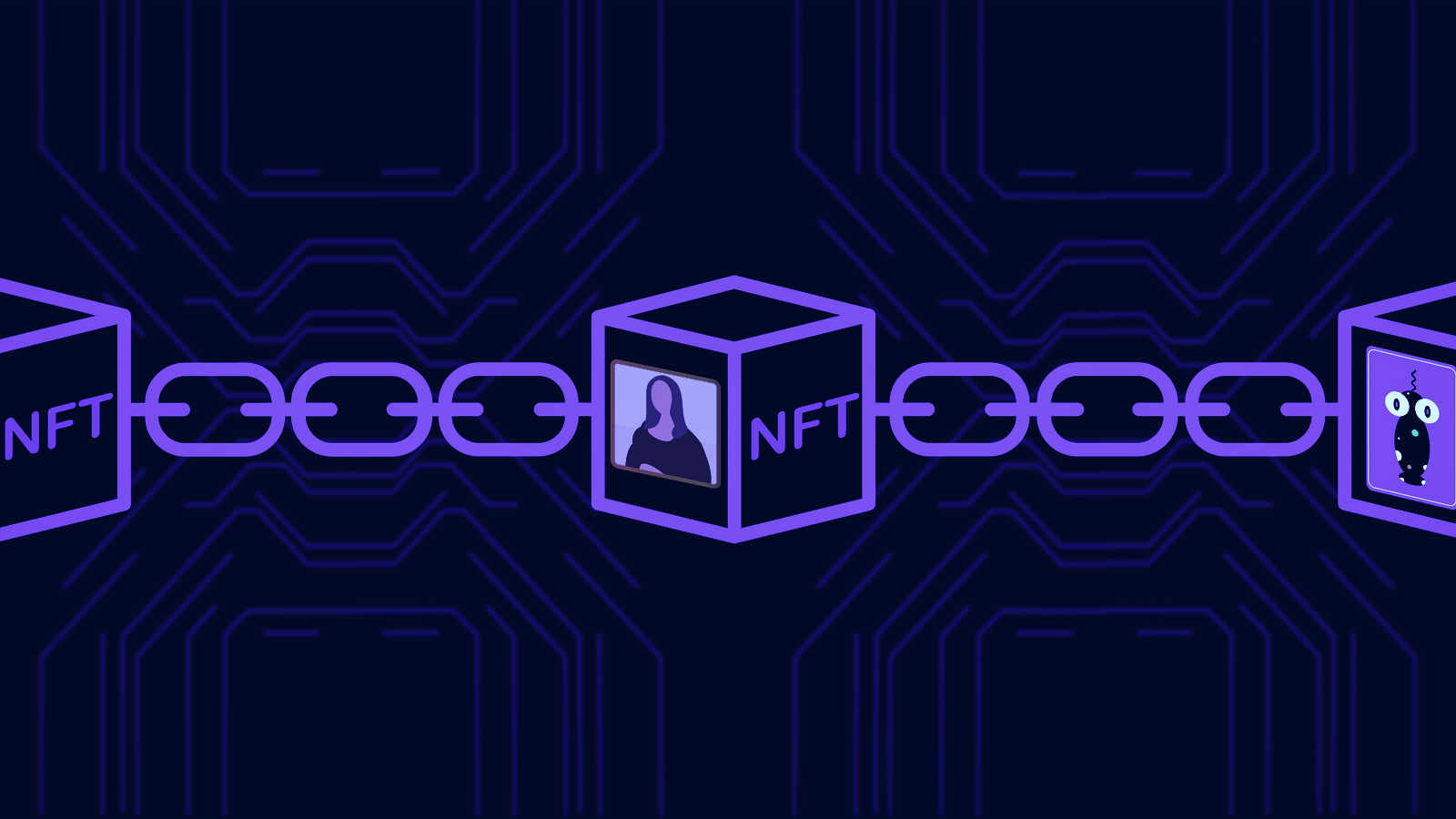Business
NFTs and Smart Contracts Made Easy: Lexyom Simplifies Smart Contract Creation and Auditing to Save Clients Time

Just one year ago, NFTs remained largely outside mainstream public discourse, known and understood only by fringe groups of crypto enthusiasts. By the end of 2021, however, the phenomenon had grown into a $41 billion industry. An NFT, or “non-fungible token”, refers to verifiable ownership of digital material through the use of blockchain technology. At the outset, the digital ‘material’ being bought and sold online mostly consisted of digital art, however, as the year progressed, creators and programmers consistently stretched the boundaries of the term. Tweets, virtual clothing, and even sequences of DNA all sold for increasingly large sums in 2021 as investors and fans rushed to purchase them in the form of NFTs.
NFTs function by way of smart contracts, which power the tokens’ transferability and verification of ownership. Still, despite their critical role in the production and trading of NFTs, smart contracts and their importance remain less discussed.

What are Smart Contracts?
Like traditional contracts, smart contracts are used anytime two parties wish to establish terms and mutual obligations through a binding contract. The difference between them lies primarily in smart contracts’ utilization of blockchain technology, which allows for decentralized, transparent, and automated agreement execution, without the need for traditional third party involvement.
NFTs are minted through smart contracts that assign original ownership, while still allowing for transferability. When someone mints an NFT, they execute code stored in smart contracts that conform to different standards, such as the most commonly used standard: ERC-721.
Where does Lexyom come in?
Lexyom creates custom smart contracts for minting NFTs, producing a totally unique body of code for each individual client. Where platforms such as OpenSea operate through a shared hosting system, thereby negating one of the central premises of the crypto ethos: decentralization, Lexyom works to write smart contracts free from the oversight of a single authority. What would happen should such large platforms go down for maintenance?

Centralized conformity to pre-existing standards entails a general loss of security by way of overreliance on a single authority to execute code.
Beyond this, Lexyom offers a smart contracting auditing service, for clients seeking to verify the credibility and strength of already existing contracts. Their team of Web 3 developers brings years of project experience to review the contract and ensure it functions clearly, coherently, with the full validity and transparency necessary to guarantee client satisfaction. Smart contract auditing serves as a final stamp of approval from an accredited legal service provider.
For more information, or to learn how you can create or audit your own smart contracts, visit www.lexyom.com
Twitter: @LexyomLaw
Instagram: @LexyomLaw
Business
Royal York Property Management And Nathan Levinson On Building Stable Rental Portfolios In A Volatile Market

Across North America, Europe, and much of the world, rental housing is caught between two pressures. On one side are tenants facing record affordability challenges. On the other side are landlords seeing operating costs, interest payments, and regulatory complexity move in the opposite direction.
Recent analysis from Canada’s national housing agency shows how tight conditions still are. The average vacancy rate for purpose-built rentals in major Canadian centres rose to about 2.2 percent in 2024, up from 1.5 percent a year earlier, but still below the 10-year average despite the strongest growth in rental supply in more than three decades.
At the same time, higher interest rates have pushed up the cost of acquiring and financing rental buildings, which has slowed transactions and made many projects harder to pencil out.
In this environment, the question for landlords and investors is less about chasing maximum rent and more about building stability. That is where Royal York Property Management and its founder, president, and CEO Nathan Levinson have drawn attention.
From a base in Toronto, Royal York Property Management manages more than 25,000 rental properties, representing over 10 billion dollars in real estate value, and operates across Canada, the United States, and parts of Europe. Levinson also sits on a Bank of Canada policy panel focused on the rental market, where he provides data and on-the-ground insights about rent trends and landlord stress.
For many smaller property owners, his model has become a reference point for how to treat rental housing as a structured financial asset rather than a side project.
Rental housing under pressure from both sides of the balance sheet
In many countries, the basic rental story is the same. Construction of new rental housing has climbed, yet demand still runs ahead of supply in most major cities. In Canada, overall rental supply grew by more than 4 percent in 2024, the strongest increase in over thirty years, while vacancy rose only modestly.
At the same time, borrowing costs have moved sharply higher compared with the pre-pandemic period. Research shows that elevated interest rates have reduced the profitability of new multifamily deals and slowed investment activity, even as structural demand for rental housing stays strong.
For small and mid-sized landlords, that tension shows up in a simple way. Mortgage payments, taxes, insurance, and maintenance rarely move down. Rents move up more slowly, and in many jurisdictions they are constrained by regulation or market realities.
Levinson’s view is that this gap will not close on its own. Landlords who want to stay in the market need more predictable income, tighter control of costs, and clearer systems for dealing with risk.
A property management model built for volatility
Royal York Property Management did not start as an institutional platform. Levinson’s early clients were owners of single condominiums, duplexes, or small buildings who were struggling with irregular rent payments, surprise repairs, and complex rental rules.
Instead of handling each property ad hoc, he built a standardized operating model that treats every door as part of a wider portfolio. Each unit sits on a centralized platform that records rent, arrears, lease expiries, maintenance tickets, and legal actions. Owners see real-time statements and performance metrics rather than waiting for year-end reports.
That structure, combined with an internal maintenance and legal team, is designed to handle stress rather than avoid it. When markets are calm, the system may look conservative. When conditions worsen, it is what keeps owners in the black.
“Execution is everything” is how Levinson often frames it in interviews.
Turning rent into a more predictable income stream
The feature that first drew many investors to Royal York Property Management is its rental guarantee program in Ontario. Under this model, landlords receive their rent even if a tenant stops paying. RYPM takes responsibility for legal proceedings, arrears recovery, and re-leasing the unit, while the owner continues to receive income.
Independent profiles of the company describe this as one of the first large-scale rental guarantee frameworks in the Canadian market, and note that the firm manages tens of thousands of units under this structure.
The guarantee itself is closely tied to local law and does not transfer directly into every jurisdiction. The underlying logic, however, is straightforward:
- Treat unpaid rent as a recurring and manageable risk rather than an occasional shock.
- Price that risk into a clear product instead of handling each case informally.
- Use scale, legal expertise, and data to keep default rates low and resolution times shorter.
For landlords who are facing mortgage renewals at higher interest rates, having a more stable rent stream can be the difference between holding a property and being forced to sell. That is one reason rental guarantee models have started to attract interest from investors outside Canada who are watching RYPM’s approach.
Using technology to see risk earlier
Behind the guarantee and the day-to-day operations is a technology stack that tries to surface problems before they become crises. Royal York Property Management’s internal platform uses data from payments, maintenance, and tenant behavior to flag risk signals and operational bottlenecks.
Examples include:
- Tenants who move from on-time payments to repeated short delays.
- Units where small repair tickets point to a larger capital issue ahead.
- Buildings where complaint volumes suggest service gaps or staffing problems.
Rather than treating these as isolated events, the system aggregates patterns across thousands of units. That allows management to decide whether a problem is individual, building-specific, or systemic.
Levinson has also pushed this data outward. As a member of the Bank of Canada’s rental policy panel, he provides anonymized information on rent collection, defaults, and renewal behavior, which feeds into broader discussions about financial stability and housing policy.
The same data that protects a landlord’s cash flow in one building helps central bankers understand how higher rates are affecting thousands of households.
Why the Canadian case matters for global landlords
Several recent reports underline how closely rental markets are now tied to national economic performance. Tight rental supply and high rents are feeding inflation in many economies. At the same time, higher borrowing costs are discouraging new construction, which risks prolonging shortages.
This feedback loop is especially hard on small landlords. Many own only one or two properties and have limited room to absorb higher mortgage payments or extended vacancies. Analysts in Canada and abroad have warned that some owners are at risk of default as their loans reset at higher rates.
In that context, the Royal York Property Management model offers three lessons that travel across borders:
- Standardization protects both sides. Clear processes for screening, rent collection, maintenance, and legal steps reduce surprises for owners and tenants at the same time.
- Risk pooling is more efficient than one-off crises. Handling arrears, legal disputes, and vacancies inside a structured system is less costly than improvising each time.
- Operational data belongs in policy conversations. When policymakers have access to real rental data rather than only mortgage statistics, interventions can be better targeted.
It is not an accident that Levinson’s work now sits at the intersection of private property management and public financial policy.
What everyday landlords can borrow from the Royal York playbook
Most landlords will not build a 25,000-unit management platform. Many will never interact with a central bank. The core ideas behind Nathan Levinson’s approach are still accessible to smaller owners that manage a handful of properties.
Three practices stand out.
First, treat every rental unit as part of a simple portfolio. That means using a consistent template to track rent, arrears, expenses, and vacancy days for each property, then reviewing it on a schedule instead of only when something goes wrong.
Second, write down the rules for risk in advance. Late-payment steps, repayment plans, documentation standards, and maintenance response times should exist on paper, not only in memory. Royal York’s experience suggests that clear rules reduce conflict, because everyone knows what will happen next.
Third, invest in service as a protective layer. Multiple independent profiles of RYPM point out that faster response times and transparent communication reduce tenant turnover and protect building condition, which in turn supports long-term returns.
For landlords and investors trying to navigate today’s volatile rental markets, the message from Royal York Property Management and Nathan Levinson is surprisingly simple. You cannot control interest rates or national housing policy. You can control how organized your portfolio is, how clearly you manage risk, and how consistent your operations feel to the people who live in your buildings.
For many, that shift from improvisation to structure is what will decide whether their rental properties remain a source of wealth or turn into a source of stress.
-

 Tech5 years ago
Tech5 years agoEffuel Reviews (2021) – Effuel ECO OBD2 Saves Fuel, and Reduce Gas Cost? Effuel Customer Reviews
-

 Tech6 years ago
Tech6 years agoBosch Power Tools India Launches ‘Cordless Matlab Bosch’ Campaign to Demonstrate the Power of Cordless
-

 Lifestyle6 years ago
Lifestyle6 years agoCatholic Cases App brings Church’s Moral Teachings to Androids and iPhones
-

 Lifestyle5 years ago
Lifestyle5 years agoEast Side Hype x Billionaire Boys Club. Hottest New Streetwear Releases in Utah.
-

 Tech7 years ago
Tech7 years agoCloud Buyers & Investors to Profit in the Future
-

 Lifestyle5 years ago
Lifestyle5 years agoThe Midas of Cosmetic Dermatology: Dr. Simon Ourian
-

 Health7 years ago
Health7 years agoCBDistillery Review: Is it a scam?
-

 Entertainment6 years ago
Entertainment6 years agoAvengers Endgame now Available on 123Movies for Download & Streaming for Free
